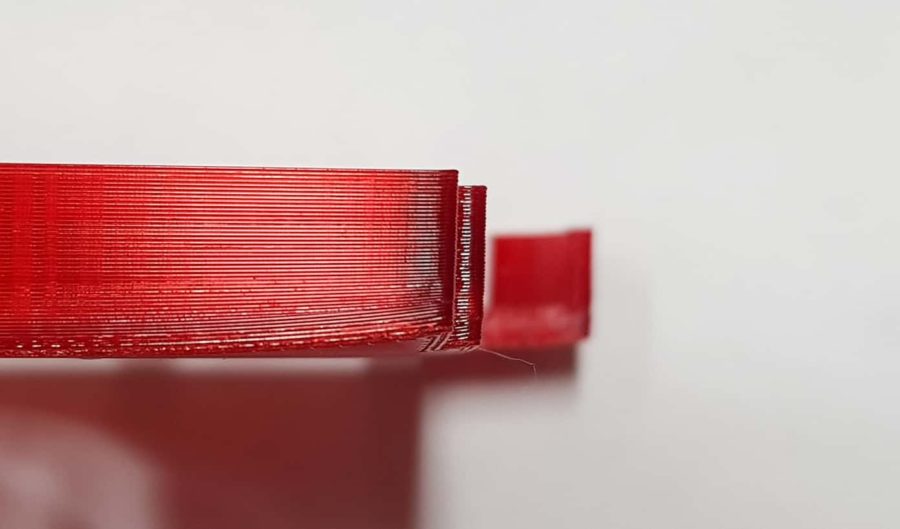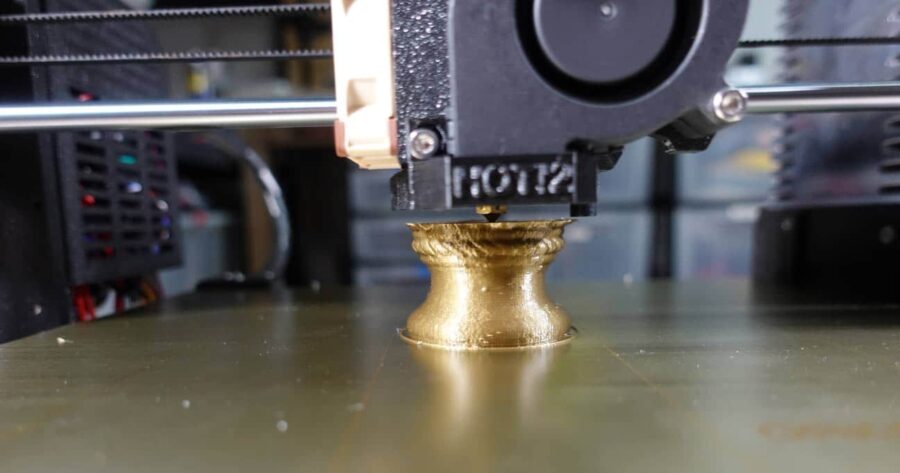PLA Filament – What can it do and why is it so popular?
Here I introduce you to PLA filament. It is the most popular material and, due to the ease of processing, is used mainly as an entry-level material. You will learn something about the material PLA, get to know the advantages and disadvantages and you will also know which manufacturers sell the material.
Where can I buy PLA filament?
Here is a selection of PLA, which you can find on Amazon:
* Stand: 2024-04-20 / Bilder: Amazon API
However, if this list is not enough for you, please visit the following page to discover the latest bestsellers:
Buy PLA Filament – Current Best Sellers
What is PLA Filament or PLA?
PLA is the best known 3D printer material next to ABS. PLA stands for polylactic acid. PLA is a bioactive and biodegradable polyester and consists of lactic acid building blocks. Earlier applications of the material were mostly limited to biomedical fields because it can be safely absorbed biologically. In recent decades, PLA has become increasingly important due to the rise of environmental awareness among the population and the development of economic production methods. Thereby it is often used in the consumer goods industry for the packaging material.
PLA is made from renewable raw materials and is compostable under perfect conditions. That's why in many stores you will read these characteristics.
Advantages of PLA Filament
Here are the advantages of the 3D printer material PLA. There are many good reasons why this is the most popular material.
Biodegradability
As already mentioned, PLA is compostable under perfect conditions. This can only be done in plants designed for this purpose. Then, in less than a month, PLA can be broken down into its natural components. In comparison, other plastics take much more time, some even centuries.
More environmentally friendly production
The use of corn provides a certain sustainability here. The carbon dioxide consumed in corn cultivation ensures that a negative net greenhouse gas emission is recorded.
Recyclability
PLA can, for example, be broken down into its original monomers by hydrolysis. The resulting solution can be purified and used for renewed production without significant loss of quality. PLA in its pure (!) state emits almost no toxic fumes, making it less bad or dangerous to use in residential areas than ABS, for example.
Especially suitable for 3D printing beginners
PLA is considered a grateful material because it is relatively easy to print. Most manufacturers specify temperatures of 180°C to 210°C for processing. The use of a heating bed is not always necessary. The good properties with regard to warping also ensure that this material is an “evergreen” of 3D printing.

PLA disadvantages
Where there is light – there is also shadow, which is why I am going into the disadvantages of PLA here:
Low temperature resistance
What makes for relatively easy 3D printing simultaneously causes problems in another field. You can print many things in PLA and most of them will work fine, but you should not 3D print parts with PLA that will be exposed to a somewhat elevated temperature. This means that, for example, printing a smartphone holder for your car will not work so well in the long run, because the material will definitely deform in the summer. Likewise, you should not use it to print and insert parts that are to be washed in the dishwasher. That's when a relative didn't quite listen to me and now she has a crooked fixture on one of the soup ladles.
Not suitable for long-term food storage
PLA, especially packaging material, is considered more permeable to moisture and oxygen compared to other plastics, which can cause food inside to spoil faster.
Application examples
PLA filament is used, among other things, for medical applications (for example, the production of true-to-the-original
models of organs used for surgery planning), the production of transport containers and shopping bags, hygiene products, toys, other dimensionally stable figures, housings and controls. But it is also quite suitable for the production of prototypes and spare parts, provided they do not have to be heat-resistant.
With which settings is PLA printed?
It should be said in advance that the values given here are only recommendations. Each 3D printer has its own preferences in terms of parameters, so fine-tuning is absolutely necessary. The material is also sometimes provided with various additives, which also makes a general statement not easy.
The printing temperature can be between 180 and a maximum of 230 degrees Celsius, and the temperature of the printing bed (heating bed) between 0 and 80 degrees Celsius. The printing speed can be up to about 150 mm/s.

Is a heated print bed (heatbed) required in the 3D printer for PLA filament?
No, not necessarily. PLA filament can also be used without a heated print bed.
Can PLA filament be glued? If so, which adhesive is recommended?
Yes, PLA filament can certainly be glued. Very often, 3D printing enthusiasts resort to epoxy adhesives here. The epoxy glue is a kind of resin, which after a few minutes creates a very strong bond between the two parts. Many users also recommend roughening the surfaces to be glued a little beforehand. Special plastic and superglues are also said to be suitable for gluing objects made of PLA filament.
Can PLA filament be reworked?
Important for possible post-processing of objects printed from PLA is the value of impact strength. Unfortunately, this turns out to be only very moderate here. Therefore, milling work, but also drilling should be approached with extreme caution. Particular care should be taken with fragile objects, otherwise they can break very quickly. Gluing, sanding and even painting, on the other hand, can be done without hesitation. Since PLA filament is acetone resistant, this substance cannot be used for post-processing.
What do I have to pay attention to when storing PLA filament?
Filaments should generally be stored away from moisture. For example, it makes sense to pack started rolls of PLA filament in films, which in turn can be stored in larger boxes. Since the material is only moderately resistant to weathering and temperature, it should be stored at the same time in a darker place. New filament rolls should remain in their original packaging until their first use.
Vacuum bags, among other things, are also suitable for the dry storage of filaments. Here, the filament roll is packed into the respective bag and the air is extracted with the vacuum cleaner tube. This creates a vacuum, which ensures that the filament cannot absorb moisture.
If the PLA or any other filament has already become moist, it should be possible, for example, to dry it again with the help of an oven or – if available – an automatic dehydrator. The drying process should be carried out at a low temperature and checked regularly. If too high a temperature is selected, there is a risk that the PLA will warp. However, there are now also special devices that have been developed for drying filaments. One of these devices, for example, is called PrintDry and enables the simultaneous drying of up to two rolls of filament.
Surely, if you've bought shoes or leather goods, you've noticed those little packages that come with the boxes or bags. These contain small silica gel beads that absorb moisture when needed. These beads are also available separately and some are provided with a color indicator. If their color changes, they should be quickly removed and replaced with new ones. The old silica gel beads can then be dried again in the oven for about 2.5 to 3 hours at about 120 degrees and, once they have regained their original color, can be used again.
